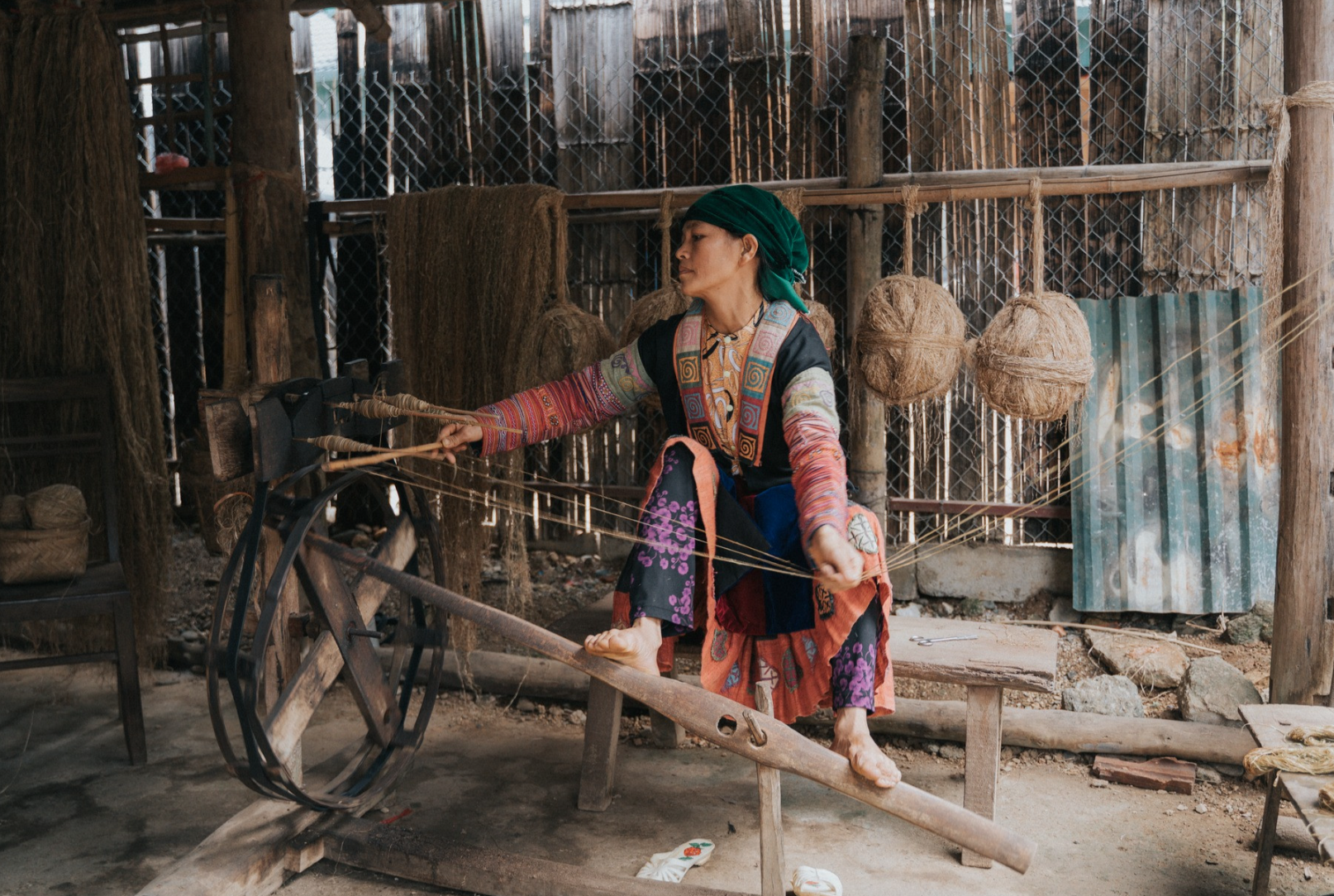
Ha Giang is famous for the traditional craft villages of 22 ethnic groups here. Many traditional occupations have been restored and prospered, not only creating jobs for workers but also converging the diverse and unique cultural values of 19 ethnic groups in this northernmost borderland of Vietnam.
Typical examples include the traditional flax weaving craft of the H'Mong ethnic group, the brocade craft village of the Lo Lo and Pa Then ethnic groups, the silver carving craft village and ban paper making village of the Dao ethnic paper, and the H'Mong flute making craft village or the knife and plowshare forging village.
Up to 90% of population of Dong Van Stone Plateau are the H'Mong people, who still self-make many utensils to serve their daily life. Coming to Dong Van, visitors will have the opportunity to learn about the craft of making H'Mong flutes. In today's life, many traditional values have been lost, but the H'Mong people still preserve the flute with elaborate and precise manufacturing skills.
Going to Quan Ba Heaven Gate, visitors will witness firsthand the flax weaving and indigo dyeing profession of the H'Mong ethnic people in Lung Tam commune. This fabric has the characteristics of being warm in winter, cool in summer and durable. Therefore, H'Mong people love products made from flax. The H'Mong people believe that only by wearing flax outfit can they avoid losing their ancestors.
If they visit Hoang Su Phi and Xin Man districts, tourists will see the Dao people carving silver. This profession has been passed down with sophisticated technical and artistic techniques by the Dao people living in remote communes for hundreds of years. Their products include silver bracelets, decorative flowers, beads, bracelets, bracelets, earrings, rings, bells...
November 25, 2010 marked the birth of the first 4 craft villages in Ha Giang Province, under Decision 3766 of the Provincial People's Committee, including: Nang Don rice wine making traditional craft village in Nang Don commune, Hoang Su Phi district; Tay ethnic brocade weaving village in Xuan Giang commune of Quang Binh district; Pa Then ethnic brocade weaving village in Tan Bac commune of Quang Binh district; and Lung Tao brocade weaving village in Cao Bo commune of Vi Xuyen district.
Currently, in 10/11 districts and cities of Ha Giang (except Yen Minh district), there are a total of 37 craft villages and 4 traditional craft villages recognized with 5 industry groups: Food processing (accounting for 46.34%) ; textile and garment dyeing (29.27%); handicrafts (17.07%), metal engineering (4.88%), Ban paper production (2.44%).
Craft villages are most concentrated in the 3 districts of Dong Van (8 craft villages), Quang Binh (6), and Bac Quang (7). Crafts are quite diverse in many fields such as: Bamboo and rattan weaving, tea processing, wine making, banh chung making, brocade weaving, chit broom making, rattan and bamboo weaving, Mong flute making, agricultural tool forging, and ban paper making.
According to statistics, Ha Giang province currently has 41 craft villages and traditional craft villages. Considered as a potential for the province to promote tourism development, in addition to restoring, preserving and promoting the quintessence of national culture, Ha Giang authorities have paid special attention to environmental protection in craft villages, considering this a "vital" activity in the sustainable development process.
The total workers in these craft villages are more than 4,300 people. Many thriving craft villages have created jobs for many local people. On average, each household production establishment employs 2-3 family members and hires dozens of additional workers during peak seasons, bringing the total number of additional workers hired in craft villages to more than 700 people.
To meet the goals of sustainable development and green development, the Ha Giang Provincial People's Committee has issued many legal documents, programs and plans to implement the Party's policies and the state laws on environmental management and protection in craft villages. However, there are still many limitations.
According to recent surveys of the Department of Natural Resources and Environment in carrying out the task of investigating and classifying craft villages according to the level of environmental pollution, only 12/41 craft villages have designed plans on protecting the environment (according to Clause 1, Article 56, Law on Environmental Protection). The number of craft villages that do not have an environmental protection plan is very high, accounting for 70.74% of the total number of craft villages in Ha Giang province.
Therefore, to maintain and develop craft villages, relevant agencies in Ha Giang province are synchronously implementing many solutions such as: Strengthening craft village management; Integrating funding sources to support and invest in craft village development; expanding scale and diversifying designs associated with product promotion and consumption; opening vocational training courses for rural workers to help them improve their skills, creating many quality and unique products of each region.
In particular, based on the results of implementing tasks and legal regulations on environmental protection, the Department of Natural Resources and Environment has proposed that the Provincial People's Committee direct the Department of Agriculture and Rural Development to not submit to the Provincial People's Committee for recognizing new craft villages if craft villages do not meet environmental protection requirements, and revoking the recognition certificate for craft villages that do not meet environmental protection requirements according to regulations.
These moves are vivid evidence of Ha Giang's determination to achieve the goals of green development, sustainable development, modernization and innovation of rural areas.